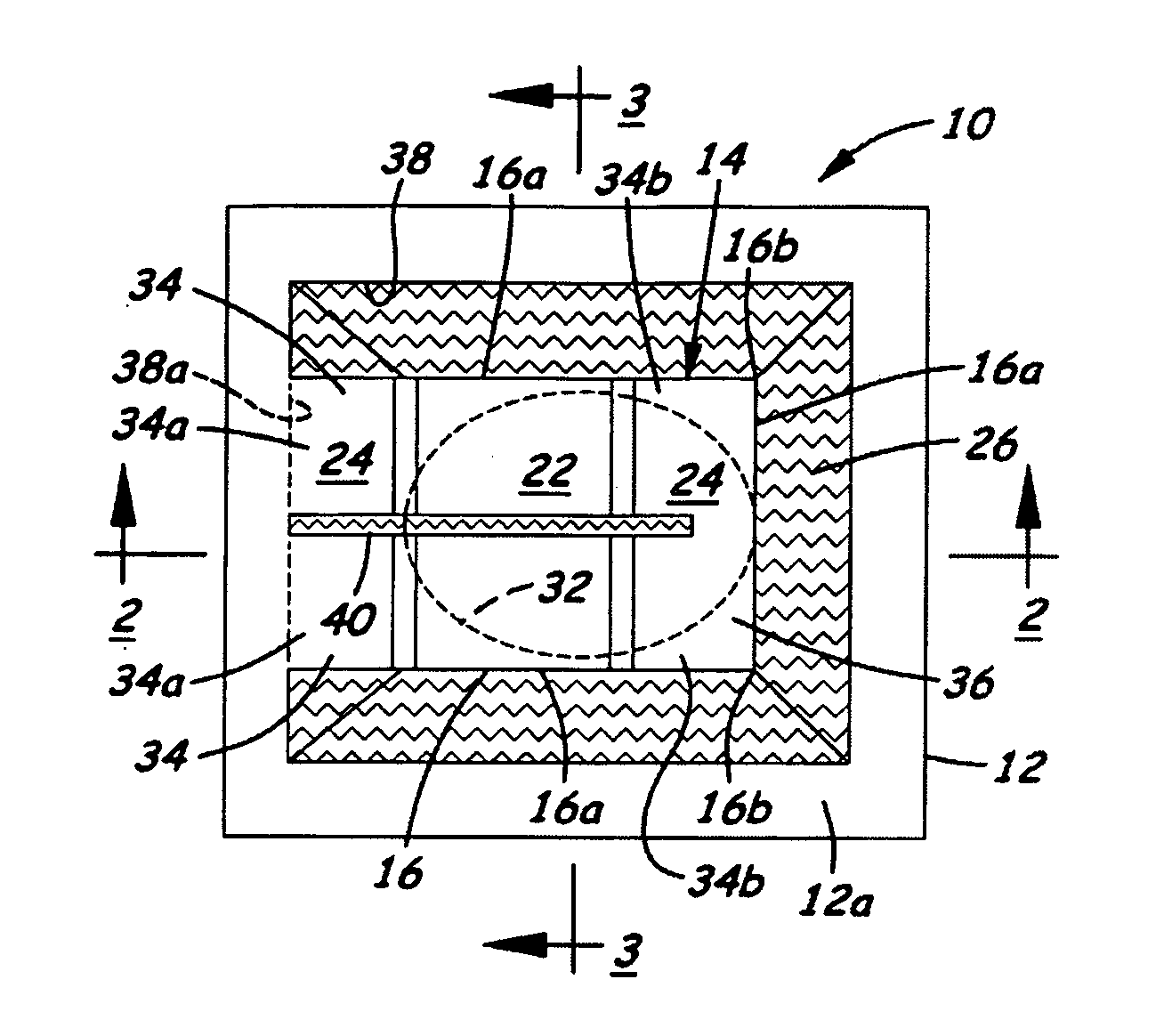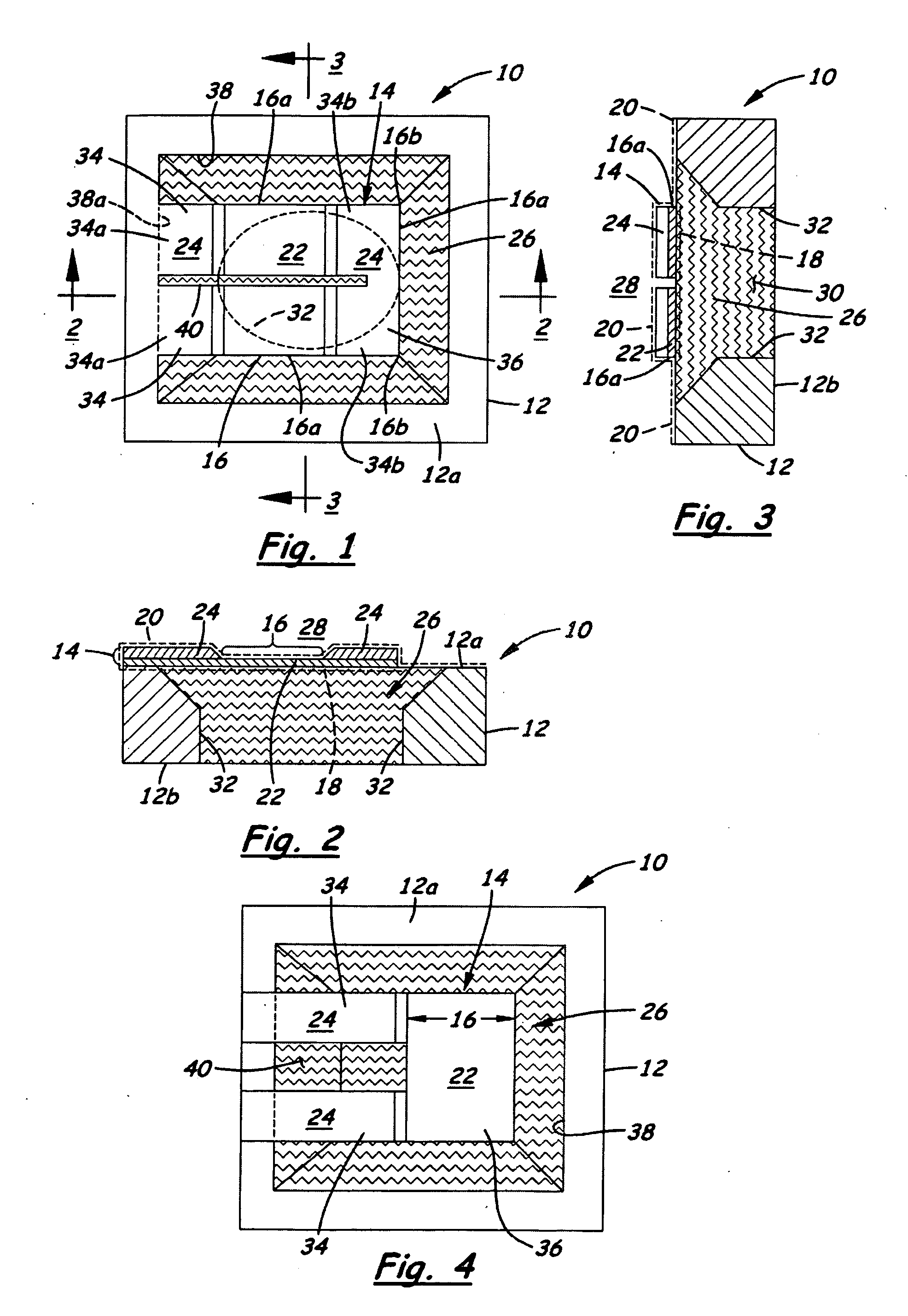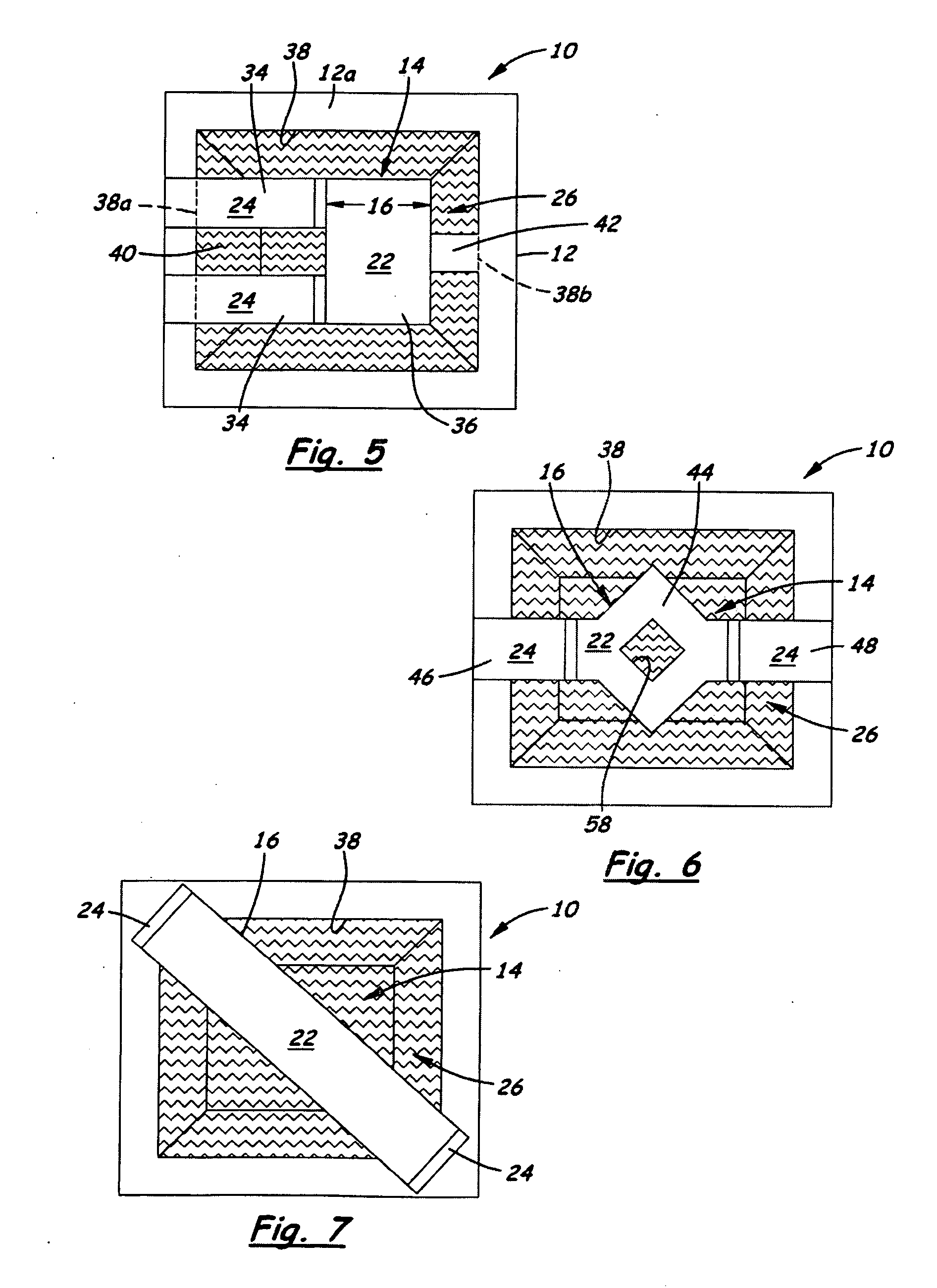Heater Stack In A Micro-Fluid Ejection Device And Method For Forming Floating Electrical Heater Element In The Heater Stack
a technology of microfluid ejection and heater stack, which is applied in the direction of basic electric elements, electrical apparatus, printing, etc., can solve the problems of large percentage of energy dissipation in materials, dramatic decrease, and limited thermal properties of printheads, so as to reduce the number of fabrication steps and thus the cost of making the device, and achieves easy integration. , the effect of high thermal efficiency
- Summary
- Abstract
- Description
- Claims
- Application Information
AI Technical Summary
Benefits of technology
Problems solved by technology
Method used
Image
Examples
Embodiment Construction
[0031]The present invention now will be described more fully hereinafter with reference to the accompanying drawings, in which some, but not all embodiments of the invention are shown. Indeed, the invention may be embodied in many different forms and should not be construed as limited to the embodiments set forth herein; rather, these embodiments are provided so that this disclosure will satisfy applicable legal requirements. Like numerals refer to like elements throughout the views.
[0032]Also, the present invention applies to any micro-fluid ejection device, not just to heater stacks for thermal inkjet printheads. While the embodiments of the present invention will be described in terms of a thermal inkjet printhead, one of ordinary skill will recognize that the invention can be applied to any micro-fluid ejection system.
[0033]Referring now to FIG. 1-3, there is illustrated a first exemplary embodiment of a heater stack, generally designated 10, of a micro-fluid ejection device in ...
PUM
 Login to View More
Login to View More Abstract
Description
Claims
Application Information
 Login to View More
Login to View More - R&D
- Intellectual Property
- Life Sciences
- Materials
- Tech Scout
- Unparalleled Data Quality
- Higher Quality Content
- 60% Fewer Hallucinations
Browse by: Latest US Patents, China's latest patents, Technical Efficacy Thesaurus, Application Domain, Technology Topic, Popular Technical Reports.
© 2025 PatSnap. All rights reserved.Legal|Privacy policy|Modern Slavery Act Transparency Statement|Sitemap|About US| Contact US: help@patsnap.com



